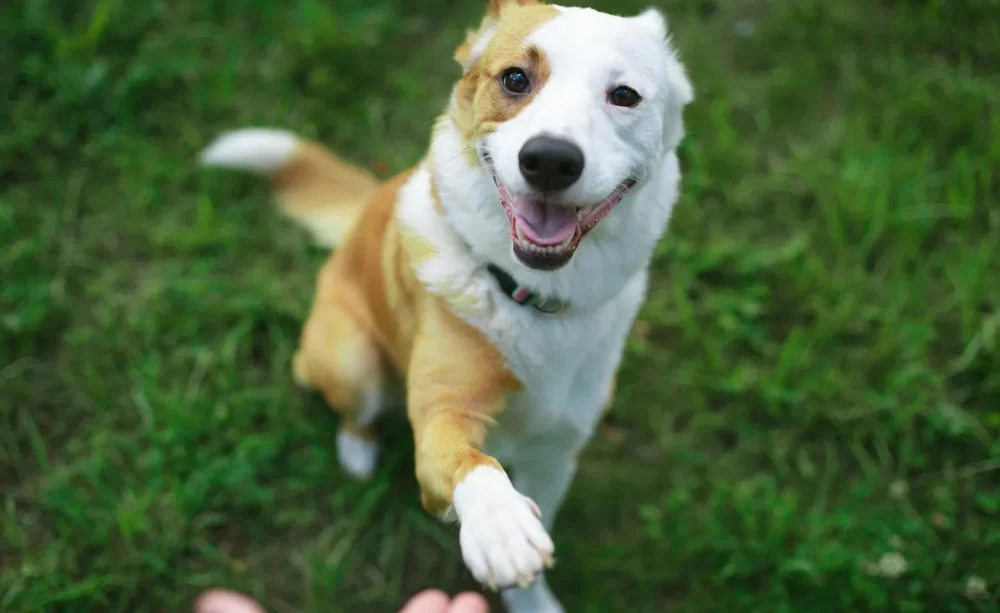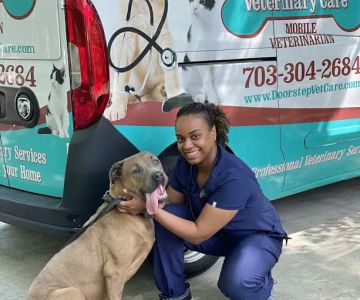How to Train a Dog to Stop Running Away: Effective Tips and Techniques
When I first adopted my dog, Max, I quickly realized that he had a tendency to run away whenever he had the chance. Whether it was during a walk in the park or when I opened the door, he would dash off without hesitation. At first, I thought it was just a phase, but it soon became clear that this was a behavior that needed to be addressed. Not only was it dangerous for Max, but it was also stressful for me as a pet owner. After a few frustrating attempts, I began researching and implementing methods to train him to stay close and stop running away. In this article, I’ll share the strategies that worked for Max, which can help you train your dog to stop running away too.

1946 S Christopher Columbus Blvd, Philadelphia, PA 19148, USA
See Details1. Understanding the Reasons Why Dogs Run Away
The first step in addressing Max’s running-away behavior was understanding why he did it. Many dogs run away because they are excited, curious, or simply seeking adventure. For Max, I noticed that he was especially prone to running when he was feeling overwhelmed or when he spotted something interesting, like another dog or a squirrel. Some dogs also run away due to anxiety, fear, or even a lack of boundaries. By understanding the root cause of Max’s behavior, I was able to better tailor my training approach to suit his needs.
If your dog runs away, it’s important to assess why they are doing it. Are they fearful? Do they have a high prey drive? Are they simply exploring their environment? Once you identify the cause, you can work on addressing it in a way that helps your dog feel secure and understand their boundaries. It may take time and patience, but addressing the root cause is key to stopping the behavior for good.
2. Reinforce the “Come” Command with Positive Reinforcement
One of the most important commands I taught Max was the “come” command. I knew that teaching him to come back to me whenever I called was the foundation of preventing him from running away. I started by using positive reinforcement to make the “come” command a rewarding experience for Max. Whenever I called him and he responded, I praised him enthusiastically and rewarded him with a treat.
At first, I practiced the command in a low-distraction environment, like our backyard, where Max felt comfortable and safe. Gradually, I increased the level of distractions, using the command while on walks or in parks where other dogs and people were present. This helped Max learn that no matter where we were, responding to the “come” command was always rewarded with something positive. Consistency and patience were key, but over time, Max learned to come to me reliably, even when there were distractions.
3. Use a Long Leash for More Control During Walks
Another strategy that helped Max stop running away was using a long leash during walks. A long leash gives your dog more freedom to explore, while still allowing you to maintain control. For Max, this was especially helpful because it allowed him to roam and satisfy his curiosity, but if he started to run, I could easily reel him back in without the need for a sharp correction.
The long leash also gave me the opportunity to practice recall in different environments, which made the “come” command even more effective. Over time, Max started to learn that even though he had more freedom to explore, he couldn’t just run off without consequences. The long leash served as a bridge between full freedom and training, helping Max get used to being called back to me even in more stimulating environments.
4. Teach Boundaries with a Fenced Area or Enclosed Space
While training Max to stop running away, I found that teaching him clear boundaries was essential. I used a fenced area in the backyard to create a safe, enclosed space where Max could roam freely without the risk of running off. The fenced area allowed Max to learn that there were certain places where he was allowed to go and other areas where he needed to stay within boundaries.
Initially, I would practice calling Max back from different parts of the yard, rewarding him when he responded to my commands. I also introduced other distractions, like toys or treats, to test his ability to stay within the boundaries. This exercise helped Max learn that staying within the set limits was rewarding, and that leaving the area would lead to the loss of those privileges.
5. Use a GPS Dog Collar or Tracking Device
While training Max, I realized that having a GPS dog collar or tracking device could be a helpful tool for added peace of mind. If Max were to slip away despite my best efforts, having a GPS collar would allow me to track his location in real-time. This gave me extra reassurance, knowing that I could quickly locate him if he ever managed to run off.
There are many GPS collars available on the market, each with different features. Some collars allow you to set a virtual boundary and alert you if your dog leaves the area. While I focused on training Max to stay within our yard and on walks, the GPS collar was a helpful backup, especially in case of emergencies.
6. Socialize Your Dog to Reduce Anxiety and Fear
Max’s tendency to run away was also partly driven by anxiety. He would sometimes dart off when he was startled by sudden noises or unfamiliar people. Socializing Max with different environments, people, and other dogs was a crucial step in helping him feel more comfortable and less fearful in new situations.
I made sure to expose Max to various social settings in a controlled and positive way. We went on walks in different neighborhoods, visited dog-friendly parks, and met new people. With each positive experience, Max grew more confident and less likely to run away when faced with unfamiliar situations. By gradually increasing the variety of his experiences, Max learned to remain calm and composed, reducing his tendency to run away in fear.
7. Be Patient and Consistent in Your Training
Above all, I learned that patience and consistency were the keys to training Max to stop running away. There were setbacks along the way, and sometimes it felt like we weren’t making progress as quickly as I hoped. However, staying consistent with our training routines and always rewarding Max for good behavior eventually paid off. It took time for him to fully trust that running away wouldn’t get him what he wanted, but with persistence, Max learned to stay close and respond to my commands.
Training a dog to stop running away isn’t something that happens overnight. It requires consistent effort, patience, and understanding of your dog’s needs. But with the right approach, your dog can learn to stay by your side, whether you're at home, on a walk, or in a new and exciting environment.











